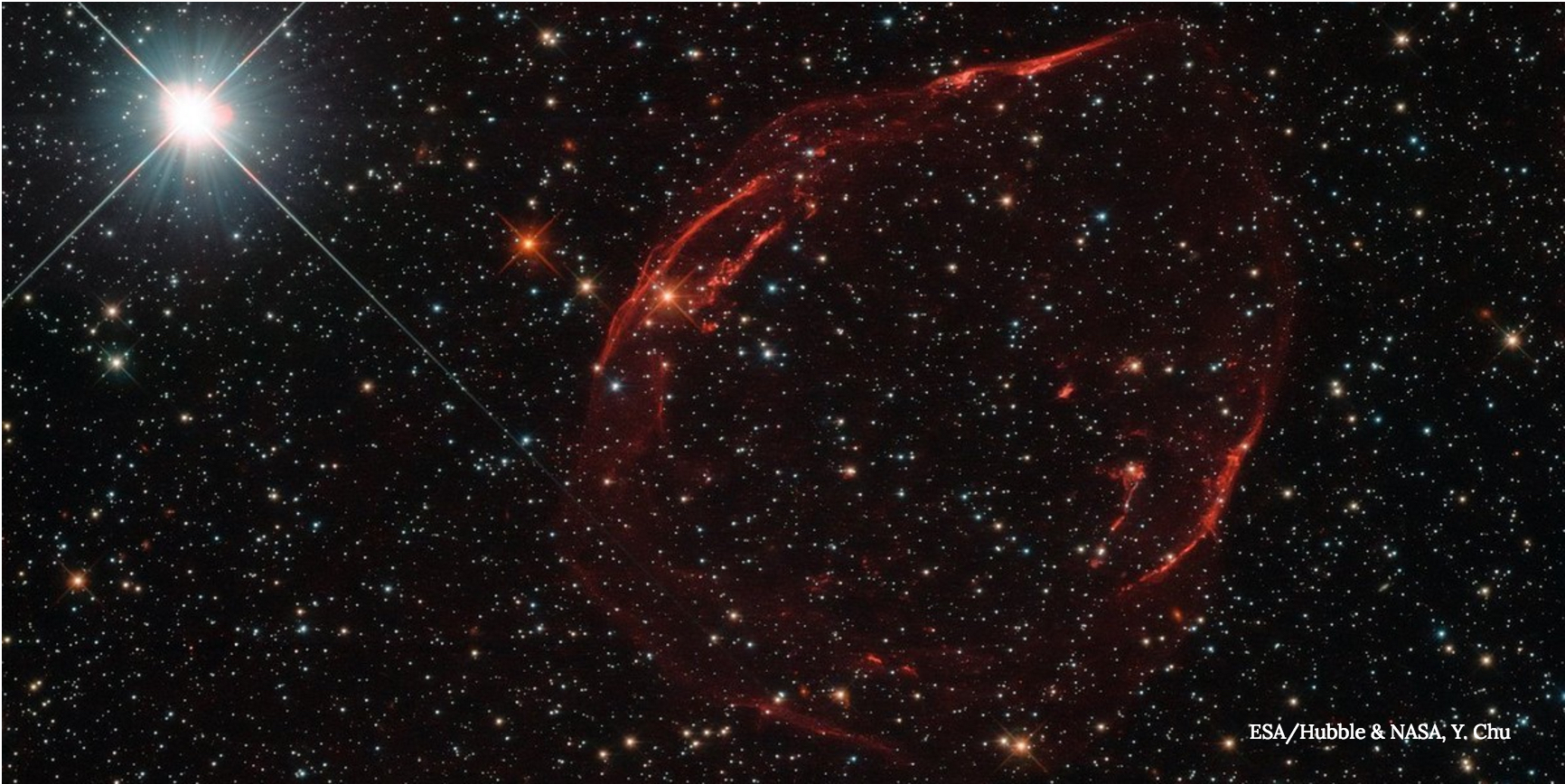Stellar 'Time Bomb' Proves Cosmic Crime Doesn't Pay

This beautiful Hubble image shows the ghostly remains of a star, which detonated 160,000 light-years away, blasting hot gases through interstellar space. But this explosion wasn't caused by a massive star running out of hydrogen, it was a different type of supernova that started with a thieving white dwarf and ended with a boom.
The stellar remains, called DEM L71, were spied by Hubble's Wide Field Camera 3 in the Large Magellanic Cloud (a satellite galaxy that orbits the Milky Way) and was formed by a type of supernova seeded by a binary star system that consists of a white dwarf and another star.
RELATED: What Makes a Supernova Blow?
White dwarfs are the leftover husks of stars that once resembled our sun. Rather than exploding when they reach the ends of their lives, they run out of hydrogen and puff up into spectacular red giants. Once expanded, violent stellar winds strip away their outer layers, creating a planetary nebula. In the center, a dense, tiny star remains that can persist for many billions of years long after its parent star becomes a distant memory. In around 4 billion years time, our own sun will experience this fate.
But things get interesting should a white dwarf be paired up with another star; it will steal the other star's gas, causing the white dwarf to form a new outer layer. As this stellar thievery unfolds, the white dwarf seals its own fate by inadvertently starting the timer on a bomb.
RELATED: Star Survives Supernova Blast to the Face
When the gas reaches a certain threshold around the white dwarf, swelling to around one and a half times the size of our sun, it becomes critically unstable and explodes as a special kind of supernova -- a Type 1a. (Aside: Type 1a supernovae are used as cosmic "standard candles" by astronomers to precisely measure cosmic distances as they explode with the same amount of gas, and therefore with the same luminosity, every time.) In the case of DEM L71, we're seeing the aftermath of what happens when the hot debris from the supernova ripped into the cool interstellar gases, creating this beautiful nebulous remnant.
Get the Space.com Newsletter
Breaking space news, the latest updates on rocket launches, skywatching events and more!
In other words, if you're a greedy white dwarf, crime doesn't pay and, if you steal your neighbor's gas, you'll explode. Also, the binary partners of exploding stars have been found to survive, amazingly. Although the cosmos is often cruel and unforgiving, in this case, justice can be served.
Source: NASA
Originally published on Discovery News.
Join our Space Forums to keep talking space on the latest missions, night sky and more! And if you have a news tip, correction or comment, let us know at: community@space.com.
Ian O'Neill is a media relations specialist at NASA's Jet Propulsion Laboratory (JPL) in Southern California. Prior to joining JPL, he served as editor for the Astronomical Society of the Pacific‘s Mercury magazine and Mercury Online and contributed articles to a number of other publications, including Space.com, Space.com, Live Science, HISTORY.com, Scientific American. Ian holds a Ph.D in solar physics and a master's degree in planetary and space physics.
